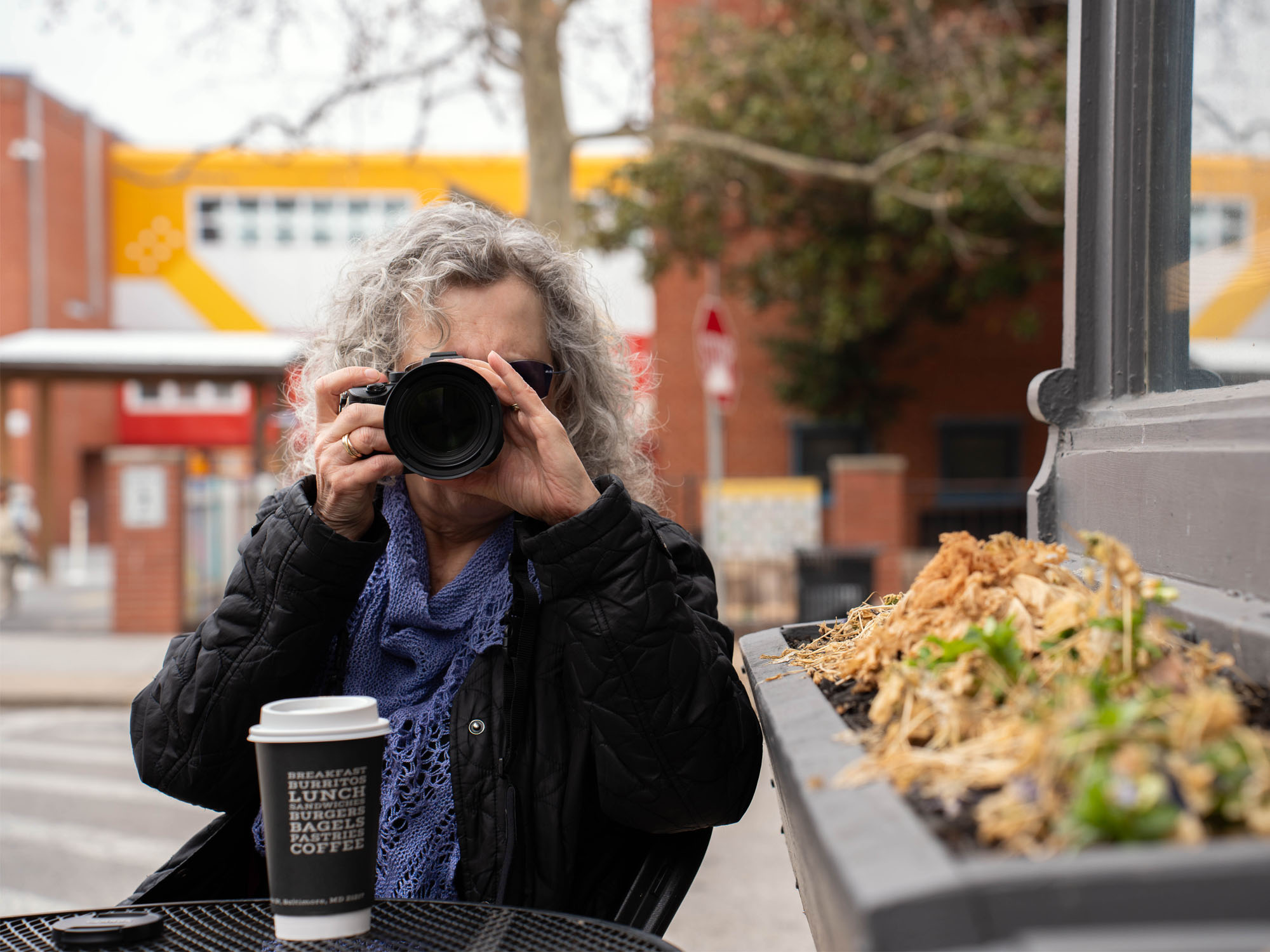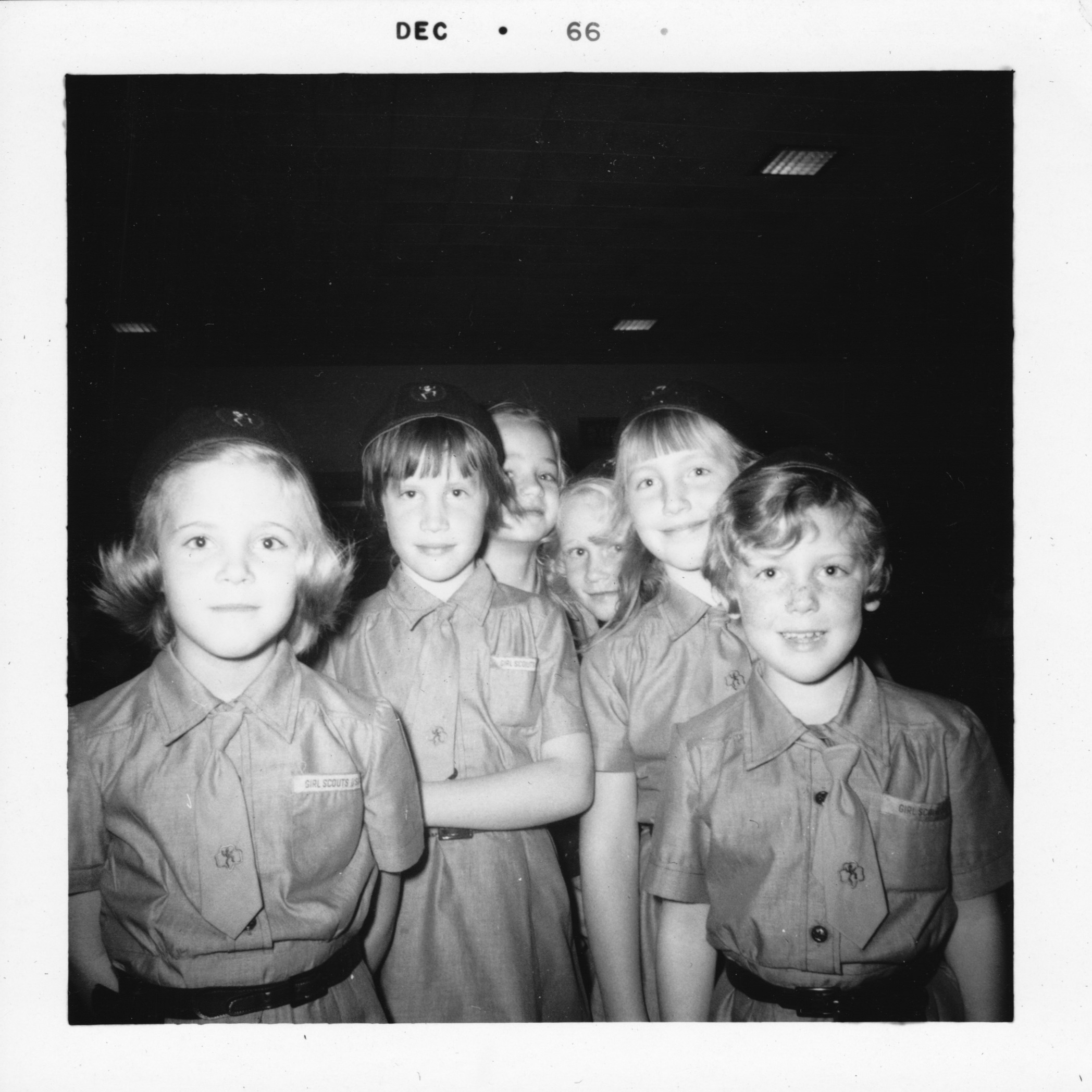
Julie B. Simon came to The University of Baltimore with a lifelong love of photography and a drive to share her passion for it, and art as a whole, with the next generation.
As a professor in the Yale Gordon College of Arts and Sciences, she helped re-imagine what is now the B.A. in Digital Communication program to give students the multi-tiered skills they need to find and thrive in creative jobs. With a specially crafted chai drink from On The Hill Café in Bolton Hill, an 8-minute walk from campus, Simon shared about her career, art and advice for budding photographers.
Q: You’ve been at this University for 35 years. What has been your proudest moment in that time
A: It’s probably developing the Digital Communication program. When I came here, Corporate Communication was fairly new, and, in fact, I was hired to help expand it. It had one faculty member. There was nobody to teach video production, there was nobody to teach photography, there was nobody to teach journalism. These were all important at the time. Students went and worked in corporate media departments, so we would funnel our students into those media departments. Then that kind of blew up in the 90s, and we geared the corporate communication toward freelance. We taught them how to do business plans, how to look for money, and how to budget—all the fun things that we do with freelance.
It was about 2007, the name corporate just kept throwing us to the business world, and that wasn't necessarily what we were doing. It was all digital. Mobile was starting, we're dealing with Blackberries, and we thought, we need to revamp this degree. I was program director of Corporate Communications and Digital Communication for 17 years. I put our faculty together, and we started doing a lot of research and looking at what industry wanted and what people wanted, and all of that. We came up with the Digital Communication program, which is similar to the one we have now. Building that program, taking it through the Maryland Higher Education Commission, that’s probably my biggest accomplishment.
Q: What’s your earliest memory related to photography and your interest in it?

A: I was the kid that grabbed the parents’ camera. When I was 7, I got a Brownie camera for Hanukkah, and I was a Brownie Girl Scout. It was a Brownie Girl Scout-branded Brownie camera, and I thought this was the coolest thing I had ever seen in my life. My mother had a little 50s-era point and shoot. My father had a single—it was a reflex camera.
So, I got my Brownie camera and my earliest picture I remember taking with it was at Brownies of my troop. I saw this picture recently. It's funny, I looked at it, and I remember taking it. I just like taking pictures. I used that camera for years. I wish I still had that camera; the old Brownie cameras were great.
Q: Between your past career producing live action news and your personal passion for the abstract, you’ve given your audiences a wide spectrum of the world through how you see it. How has your eye developed over time and what do you look for?
A: I don't think my eye is different. I've always looked at the minute. What interests me is this pattern in this table. The table doesn't interest me, the pattern interests me. Texture. It's the detail. And it's about storytelling: How do you break it up? If you can tell the story of this planter, I wouldn't do it in a wide shot. I would do it in a close up of what is in here. If it was video, I'd maybe throw one wide shot in there to establish it. When I was a producer, I was looking for the detail that nobody else was looking for. I can tell the story: You're sponsoring a bill to do x, y, z. OK, fine, but how is that going to help the people? You deep dive, deep dive, until you get to the nugget of why they're doing it. I spent a decade doing that, and I left because the world just got crazy, and journalism just got crazy.
I went to film school and started shooting again. I went back to landscapes, and it didn't really do it for me anymore. I had a great mentor in graduate school, and he was interested in surrealism, so he got me looking really at surrealism in art, in film, and in literature. I really like that, but what I pulled from that was the abstract, the single image. Take Salvador Dali and his work. It's surreal, it fits into that area of art, but if you look at the pieces of it, that's what interests me.


In the aughts I did a workshop, and by accident, I shot something completely out of focus. I actually have this image hanging outside my office door, because it's what started me doing this work. It was a beaded bracelet in a tourist shop in Maine, and I was waiting for somebody and I started shooting through the glass, just amusing myself. And this bracelet was totally out of focus. Normally you'd toss it, and I just liked it. I started shooting everything out of focus. I had been experimenting with layering in Photoshop. I started taking these out of focus, abstract images, and started layering them in Photoshop, and I haven't looked back.
Q: What do you think is the hardest lesson students have to learn when they’re studying photography or videography?
A: That it just takes time to get good. You can't just pick up a camera and be good at it. In a couple of classes, I can get you to that competent level, but if you have never done this before, it's going to take time and practice and really, shooting a lot. I tell photography students you've got to shoot 100 images to get two and I'm not kidding about that.
If you look at what I shoot, most of it, I sit there in Adobe Lightroom with my finger on the X, and I'm like, delete, delete, delete, OK, yeah, we'll save three versions of that, delete, delete. And then I just delete it from my drive because I don't want to see it again. If I second guess what I'm doing, it's always wrong. I've been doing this a long time now, and I know my first impression is right.

What Charms Us
That it's quirky. Baltimore is filled with so many different kinds of people. And I love that. … You get people whose families have been here for generations, and you get people who moved here for a job and have been here 15 minutes. And you get people that grew up in urban environments, and you get people who grew up in suburban environments, in rural environments. … It's just a funky, weird place, and that is who I am, so I love Baltimore.

